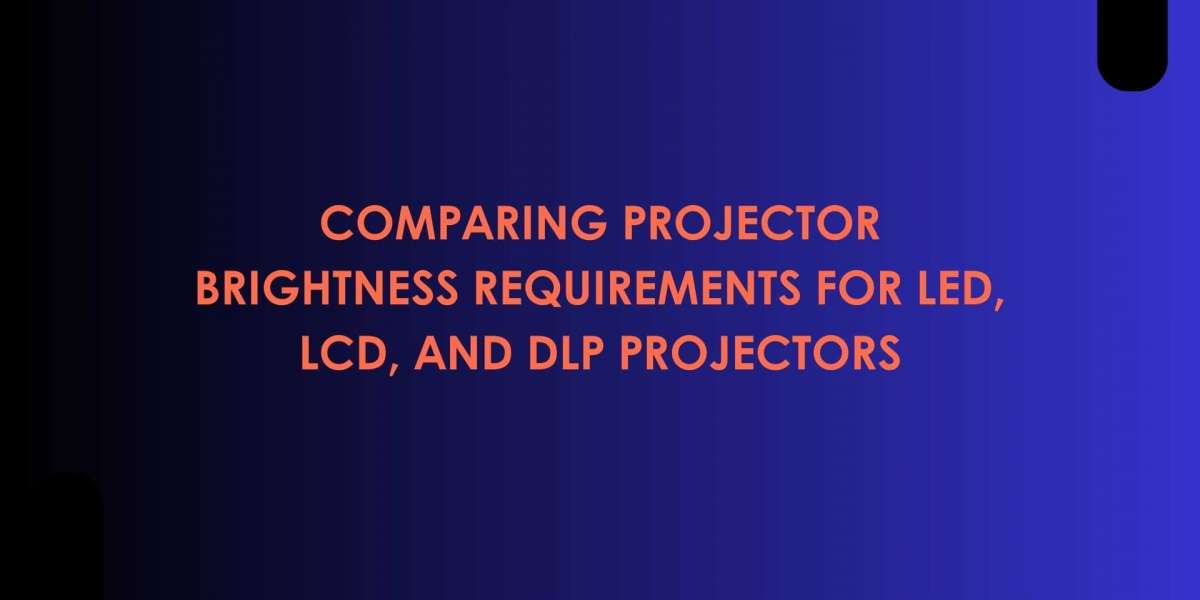When it comes to designing projection systems that deliver maximum performance, XTEN-AV helps AV professionals evaluate every technical detail. One of the most important factors in projection design is brightness. While lumens are the standard measure, not all projectors use the same technology to deliver light and images. LED, LCD, and DLP projectors each approach brightness differently, which means projector brightness requirements vary depending on the type of projector chosen.
In this blog, we will compare the three main projection technologies, how they impact brightness, and what AV professionals should consider when planning projection systems for different environments.
Why Brightness Matters
Brightness determines how clear and visible the image will be on a screen. If brightness is too low, the image looks dull and washed out, especially in well lit rooms or on larger screens. If brightness is too high, it can create glare or cause eye strain in dark environments. Projector brightness requirements must therefore be matched to screen size, room lighting, and the technology of the projector itself.
LED Projectors and Brightness
LED projectors use light emitting diodes as their light source. They are known for being compact, energy efficient, and long lasting. However, they typically deliver lower brightness compared to LCD and DLP projectors.
Brightness Range
LED projectors often range from 500 to 3000 lumens.
They are best suited for small screens and environments with controlled lighting.
Advantages
Long lamp life, often exceeding 20,000 hours.
Consistent color performance over time.
Portable and lightweight design.
Limitations
Struggle in large venues or brightly lit rooms.
Cannot meet the brightness demands of cinemas or auditoriums.
Projector Brightness Requirements for LED: Ideal for small meeting rooms, classrooms, and home theaters where lighting is controlled.
LCD Projectors and Brightness
LCD projectors use liquid crystal panels to display images. They are known for delivering bright, vibrant visuals with strong color reproduction. Compared to LED projectors, they generally offer higher brightness levels.
Brightness Range
LCD projectors typically range from 2500 to 7000 lumens.
Some professional models exceed 10,000 lumens for larger venues.
Advantages
High brightness levels suitable for medium to large rooms.
Rich color accuracy, making them popular for educational and business use.
Affordable compared to high end DLP systems.
Limitations
Bulb based systems degrade over time, reducing brightness.
Larger in size compared to LED units.
Projector Brightness Requirements for LCD: Suitable for conference rooms, classrooms, and auditoriums with moderate to high lighting conditions.
DLP Projectors and Brightness
DLP projectors use a digital micromirror device (DMD) chip to reflect light and create images. They are known for sharp visuals, excellent contrast, and the ability to handle very high brightness outputs. DLP is often the preferred choice for cinemas, large venues, and immersive installations.
Brightness Range
DLP projectors range widely, from 2000 lumens in portable models to over 30,000 lumens in premium laser based systems.
They dominate large screen and professional projection markets.
Advantages
Very high brightness potential.
Excellent contrast and clarity.
Ideal for edge blending and multi projector setups.
Limitations
Higher cost than LED or LCD projectors.
Some models may suffer from the rainbow effect, though this is less common in premium systems.
Projector Brightness Requirements for DLP: Best for cinemas, large auditoriums, immersive domes, and outdoor projections where maximum brightness is essential.
Comparing LED, LCD, and DLP Brightness
To understand how these technologies compare, it is important to evaluate not just lumen ratings but how brightness is perceived. LED projectors may seem less bright on paper but can deliver better color saturation that enhances perceived brightness. LCD projectors combine good lumen output with strong color, making them versatile. DLP projectors excel in sheer brightness, making them the best for large scale applications.
Quick Comparison
LED: 500 to 3000 lumens, best for small controlled rooms.
LCD: 2500 to 7000 lumens, ideal for classrooms and medium venues.
DLP: 2000 to 30,000 lumens, perfect for cinemas and large immersive environments.
Factors That Affect Brightness Beyond Technology
Regardless of technology, several external factors influence projector brightness requirements:
Screen Size: Larger screens need more lumens to maintain clarity.
Ambient Light: Bright environments require higher lumen projectors.
Content Type: High contrast films need less brightness than colorful presentations.
Screen Gain: High gain screens reflect more light, reducing lumen requirements.
XTEN-AV integrates these variables into its design tools so professionals can choose the right projector for each project.
How XTEN-AV Helps AV Professionals
XTEN-AV offers advanced tools that simplify the process of calculating projector brightness requirements. By analyzing the projection environment, AV designers can determine whether an LED, LCD, or DLP projector is best suited for the job. Instead of relying on general lumen ratings, XTEN-AV allows professionals to factor in screen size, ambient lighting, and content type to deliver accurate recommendations.
This ensures cost effective decisions while maximizing performance, whether the project involves a small LED setup for classrooms or a high lumen DLP system for a cinema.
Conclusion
Brightness is one of the most important factors in projection, and it is influenced not only by lumen ratings but also by the type of technology used. LED, LCD, and DLP projectors each have unique strengths and limitations when it comes to brightness.
LED projectors are compact and efficient but limited in brightness. LCD projectors provide strong brightness and color accuracy, making them versatile for business and education. DLP projectors offer the highest brightness potential, making them the top choice for large venues and cinematic experiences.
By calculating projector brightness requirements with precision, AV professionals can ensure that each projector is matched to the right application. With the support of XTEN-AV, designing projection systems becomes simpler, more accurate, and better tailored to deliver outstanding visual results.
Read more: https://gwendpots.substack.com/p/how-to-calculate-the-right-brightness








